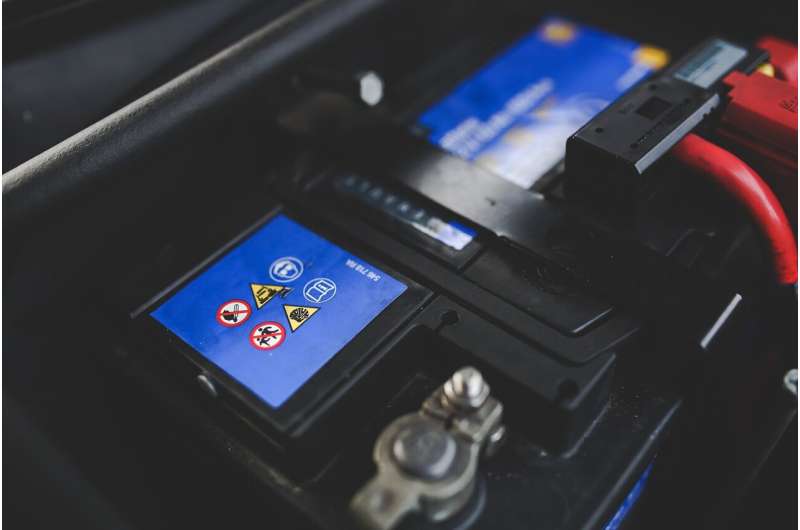Study proposes new method for screening retired batteries

In recent years, the sales of electric vehicles have experienced remarkable growth in many countries, largely due to the high energy density and low self-discharge characteristics of lithium-ion batteries. However, the safe and efficient recycling and sorting of electric vehicle batteries has become a critical concern.
In a study published in Engineering Applications of Artificial Intelligence, Dr. Lin Mingqiang’s group from Fujian Institute of Research on the Structure of Matter of the Chinese Academy of Sciences proposed a new method for screening retired batteries based on Gramian angular difference fields and ConvNeXt.
The researchers first applied a segmented aggregation approximation to reduce the dimensionality of the retired battery dataset on the constant current charging voltage curve, which utilizes a sliding window to generate short-sequence data that exhibits a similar trend to the original long-sequence data. This process achieved data reduction while preserving the essential feature information and alleviating computational load.
The team then transformed the simplified constant current charging curve into a two-dimensional image using the Gramian Matrix (GM). The Gramian angular difference fields (GADF) method was employed to encode the one-dimensional time series information utilizing the Gramian matrices. It applied normalization and polar coordinate processing to the data, followed by an inner product operation to generate the GADF image. This technique effectively eliminated redundant multimodal information, reduced the impact of data nonlinearity, and mitigated noise interference.
In addition, the researchers classified the GADF images for screening retired batteries. The ConvNeXt network dynamically updated the weights of convolutional kernels, bias terms, scale factors, and other network parameters using gradient descent and the Adaptive Moment Estimation Weight Decay (AdamW) optimizer to achieve optimal performance. The optimizer incorporated weight decay to prevent overfitting. Through the backpropagation algorithm, the network learned the appropriate weights for the hidden layers from the training data. These weights were continuously updated and optimized during the training process to minimize the loss function.
By comparing GADF and traditional methods, and the evaluation of different image classification networks, the researchers found that utilizing GADF as the input for the ConvNeXt network achieves improved screening accuracy. Future research directions will primarily focus on exploring retired battery screening strategies based on partial voltage and expanding the dataset to validate the model’s generalizability.
This study offers guidance to reduce the dependence on manual selection features and increase the accuracy for data-driven screening of retired batteries.
More information:
Mingqiang Lin et al, Screening of retired batteries with gramian angular difference fields and ConvNeXt, Engineering Applications of Artificial Intelligence (2023). DOI: 10.1016/j.engappai.2023.106397
Citation:
Study proposes new method for screening retired batteries (2023, June 26)
retrieved 26 June 2023
from https://techxplore.com/news/2023-06-method-screening-batteries.html
This document is subject to copyright. Apart from any fair dealing for the purpose of private study or research, no
part may be reproduced without the written permission. The content is provided for information purposes only.
For all the latest Technology News Click Here
For the latest news and updates, follow us on Google News.

